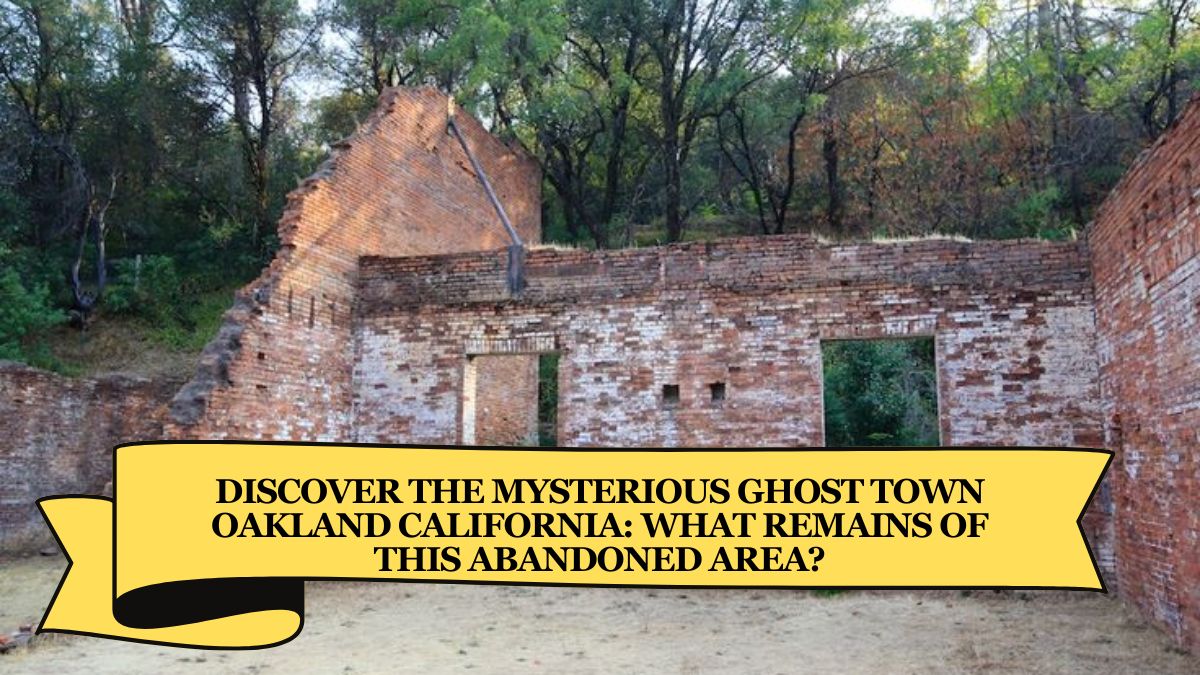Oakland, California, is a city full of life today with its rich culture, diverse neighborhoods, and bustling streets. But if you look carefully, you will find a hidden part of the city’s past — a place that was once thriving but now stands mostly forgotten: the ghost town of Oakland. This eerie and intriguing area offers a glimpse into a time when the city looked very different. In this article, we will explore the fascinating history of Oakland’s ghost town, how it came to be, and what remains of it today.
The Origins of Oakland’s Ghost Town
Before Oakland became the busy city we know today, it was home to small communities and settlements, mostly in the late 1800s. During this time, the city began to grow quickly, especially with the arrival of railroads and the rise of industry. However, not all areas in Oakland were able to keep up with the fast changes.
Some neighborhoods were left behind. These areas, once full of life, slowly faded as the city expanded and developed. The term “ghost town” is used to describe these places that were once bustling but became silent, with abandoned buildings, empty streets, and overgrown areas. Unlike many ghost towns found in remote places, Oakland’s ghost town is hidden within the city’s modern neighborhoods.
Why Did Oakland’s Ghost Town Fade Away?
The ghost town in Oakland didn’t just disappear overnight. It faded away over time due to a number of reasons. As the city grew and evolved, some older neighborhoods couldn’t keep up with the changes. Economic shifts, changes in transportation routes, and the building of more prosperous neighborhoods all contributed to the decline of this area.
One of the main factors was the industrialization of Oakland, particularly around the waterfront. As new transportation hubs and industries were built, the population of the area started to decline. Many residents moved away in search of better jobs and living conditions. As the neighborhood deteriorated, it became a ghost town, abandoned by the people who once called it home.
What’s Left of Oakland’s Ghost Town Today?
Today, very little remains of Oakland’s ghost town, but for those interested in history, there are still signs of its past. If you know where to look, you can find old industrial buildings, empty lots, and forgotten streets that hint at what used to be. Some areas still have abandoned houses and crumbling structures that give off a mysterious and eerie atmosphere.
Even though much of the ghost town has been replaced with modern developments, parts of it still stand, holding on to the history of Oakland’s earlier days. The area near the old waterfront is a popular spot for urban explorers who want to uncover the secrets of this forgotten neighborhood.
Modern-Day Significance
While the ghost town no longer exists in its original form, its history still plays an important role in understanding the growth of Oakland. By looking at how this area rose and then fell, we can better understand how the city has changed over time. The ghost town serves as a reminder of how cities grow, shrink, and evolve, sometimes leaving parts of their past behind.
In recent years, the story of Oakland’s ghost town has sparked interest in preserving the city’s history. Efforts are being made to protect and restore areas that show the city’s diverse past, ensuring that its history is not forgotten as Oakland continues to grow and develop.
Conclusion
Though much of the ghost town of Oakland is hidden beneath the layers of modern development, its legacy is still an important part of the city’s story. Today, Oakland is known for its vibrant culture and thriving economy, but the remnants of its ghost town offer a fascinating look back at the city’s past. For history lovers, explorers, and curious visitors, learning about this forgotten area gives us a deeper understanding of the city and the people who once lived there.
You Must Visit:- California State Online

